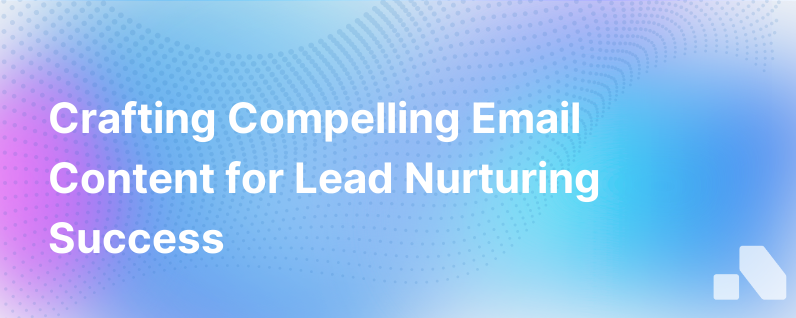
Email lead nurturing is akin to tending a garden—providing enough sunshine and water to coax flowers from the soil; too much and you risk overwhelming the plants. Similarly, when creating email content for your leads, precision and personal care are fundamental. Your emails must strike a delicate balance between informational and engaging without inundating your leads with an exhaustive sales pitch.
A robust lead nurturing campaign is well-segmented, empathetic to buyers' journeys, and delivers relevant content timed perfectly for the recipient's current stage in the funnel. Let's explore six essential tips for cultivating stronger relationships with your prospects through better lead nurture email content:
1. Segment Your Audience Thoughtfully
The first rule of successful email marketing is to know your audience—not as a mass of statistics, but as categorized, unique individuals with different pain points and aspirations. Segmentation is where most of the personalization magic starts.
Creating granular segments based on demographics, firmographics, engagement level, lead source, or behavior on your website lets you tailor your journey through the sales funnel. A lead that arrived via a webinar should have a different nurture path than someone who downloaded a whitepaper since their engagement and interest level can differ significantly.
2. Map Content to the Buyer's Journey
Not all content serves the same purpose at every stage of the buyer's journey. The buyer's journey typically morphs through awareness, consideration, and decision stages. During awareness, your lead craves educational content devoid of heavy-handed sales pitches, while in the consideration phase, comparative insights and case studies might be king. Decision-stage content can be more product-focused—underscoring your value proposition poignantly.
Ensure your email content is parallel to their stage in the buyer's journey. Use analytics to detect behaviors indicative of a stage transition, such as visiting your pricing page, indicating a progression to the decision stage, and adapt your content timing and topics accordingly.
3. Deliver Value Above Everything Else
The end game of your content should always be to provide undeniable value to the reader. Every email should offer something of worth—be it informational content like a guide or report, an invitation to a relevant webinar, a useful blog post, or even a tool that could assist them in their day-to-day work.
Lead nurturing isn't just about keeping your name in the prospect’s inbox; it's about establishing yourself as a thought leader and a helpful resource within the industry. If the recipient consistently benefits from your emails, they are more likely to remain engaged and eventually turn to you when it's time to make a purchase.
4. Optimize Subject Lines and Preview Text
The subject line is your email's handshake. An unengaging subject line can doom your carefully crafted email to the unopened limbo of your recipient's inbox. It is the prime real estate of email marketing and is worth sweating over.
And let's not overlook its sidekick—the preview text. This is an opportunity to add context to your subject line, a teaser that deepens the intrigue. Together, these elements should be concise, precise and, where appropriate, personalized. Run A/B tests regularly to understand which language appeals to your audience and drives them to action.
Craft subject lines that pique interest, provoke thoughts, or promise value, and use preview text to extend that message. However, with great power comes great responsibility, so tread the fine line between mystery and clarity thoughtfully.
5. Leverage Empathy and Tone for Relatability
Empathy is pivotal to a successful lead nurture strategy. Understanding your leads' context, challenges, and professional fears not only informs the content of your email but also its tone. Are your prospects seeking efficiency? Security in volatile markets? Innovation for competitive edge?
The more relatable your email content feels, the greater the chances of making a genuine connection with your prospect. This means your tone must resonate at the human-to-human level, not brand-to-prospect. Craft content as if you're directly speaking to your reader, use language that mirrors their everyday conversations, and don't be afraid to let some brand personality shine through.
6. CTA: Directing Energy Towards the Next Step
A clear call-to-action (CTA) is like showing your lead the next rung on the ladder—they may not need that guidance, but overlooking it could result in missed opportunities. Your CTA should be obvious, easy to find and visually distinctive, yet it should flow naturally with the content's narrative arc.
The art of the CTA lies in not being overly aggressive while still being compelling and directive. Whether it's "Download the eBook," "Schedule a Consultation," or "Join the Webinar," ensure the action is highly relevant to the content and provides clear added value for participating. Test various CTAs to find which shape, size, color, positioning, and language combination is the most effective for your audience.
Tying it All Together
Your lead nurture emails are a continuous conversation, a bridge from initial interest to informed decision. From segmenting your audiences and mapping content to the buyer's journey to providing value and crafting relatable tone and compelling CTAs—these components work in harmony to accelerate trust and conversion.
Remember to constantly measure, refine, and optimize your email campaigns. Tools and analytics can provide insights, but the real judge and jury are—always—the leads themselves. How they respond to your content will be the guidepost for your nurture strategy adjustments.
And at Aomni, we'd love to play a supporting role on your journey to mastering lead nurturing. Our AI-powered platform delivers insight-rich profiles and content suggestions that can supercharge your email campaigns, helping you nurture not just leads, but emerging customer relationships with intelligence and care.